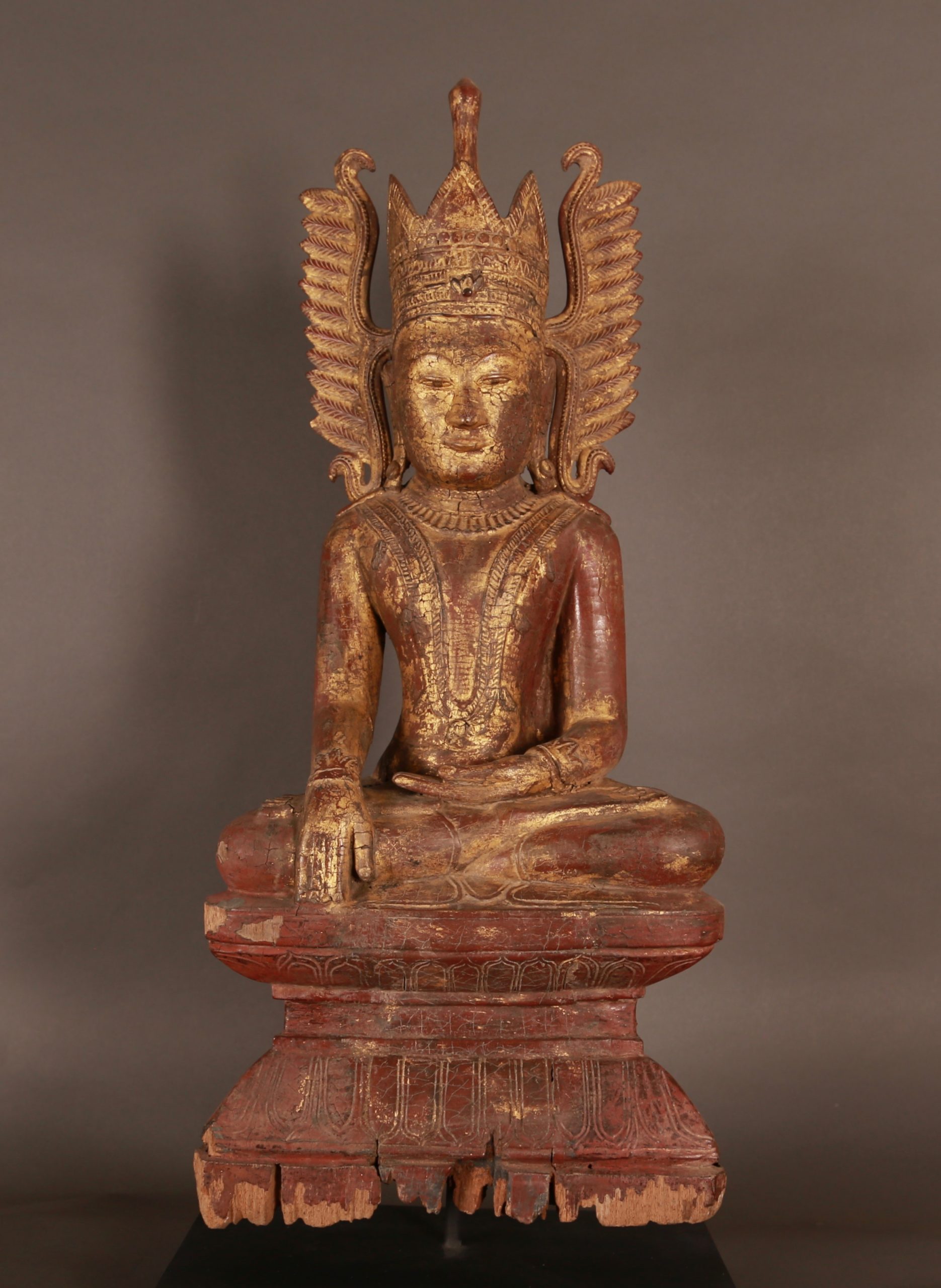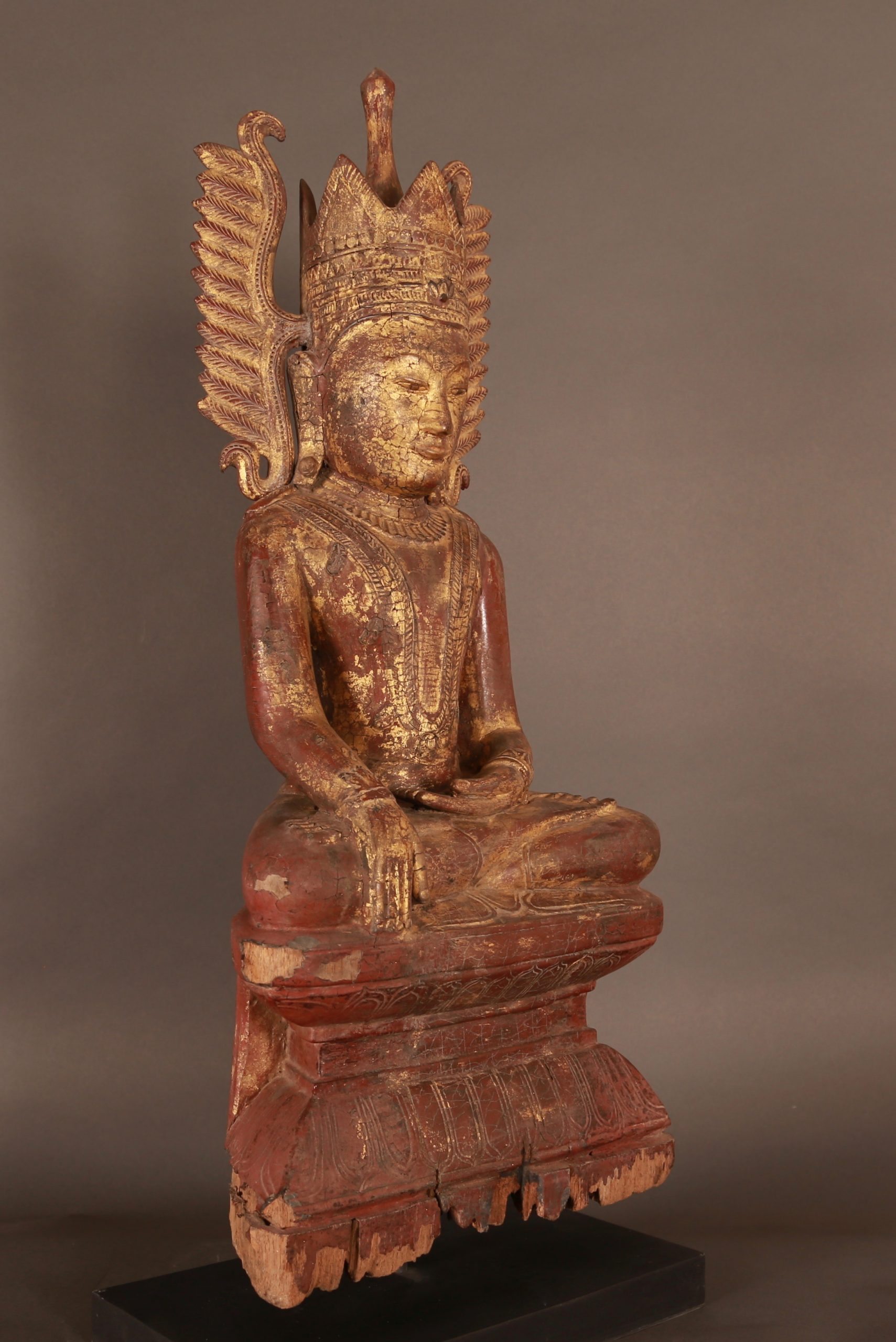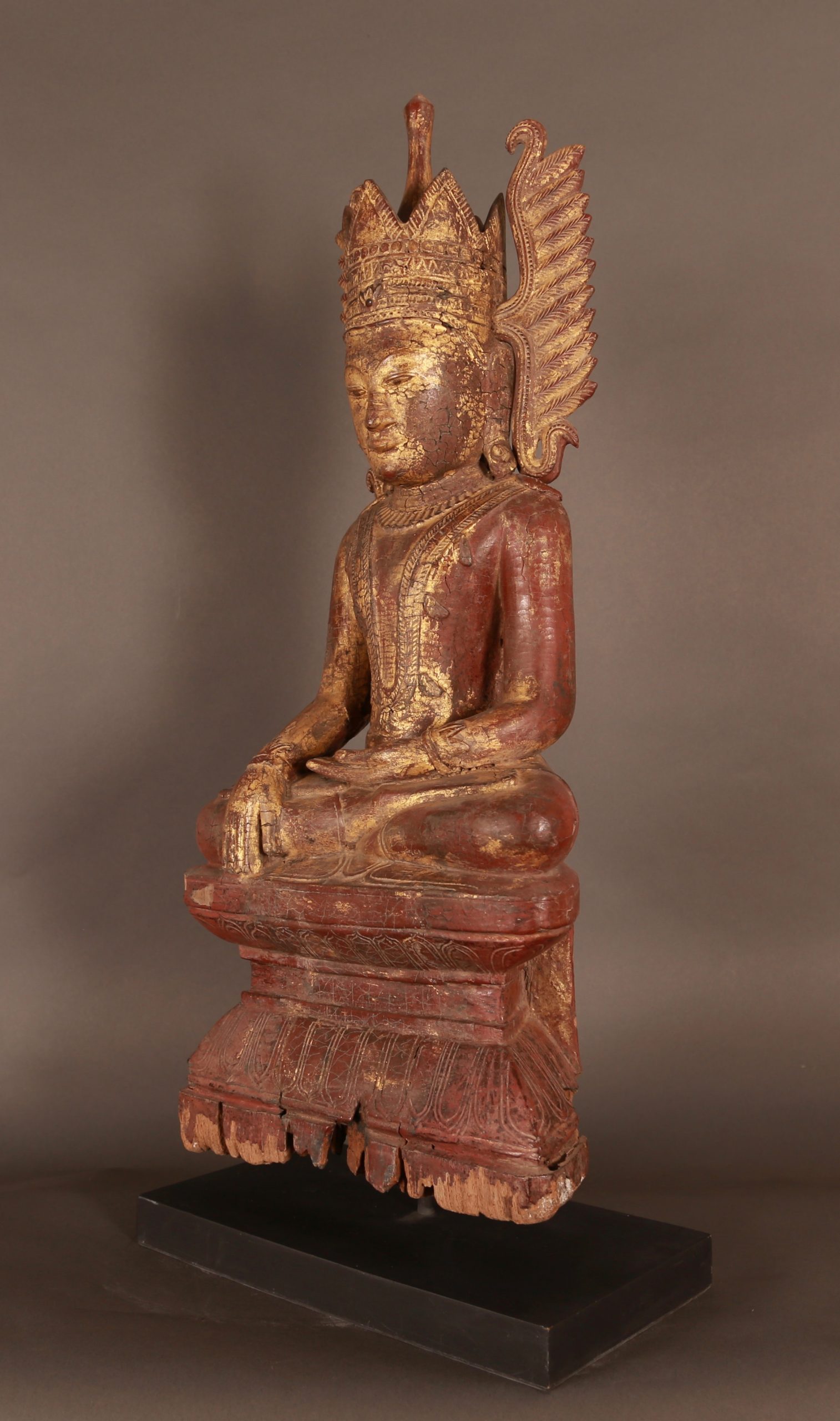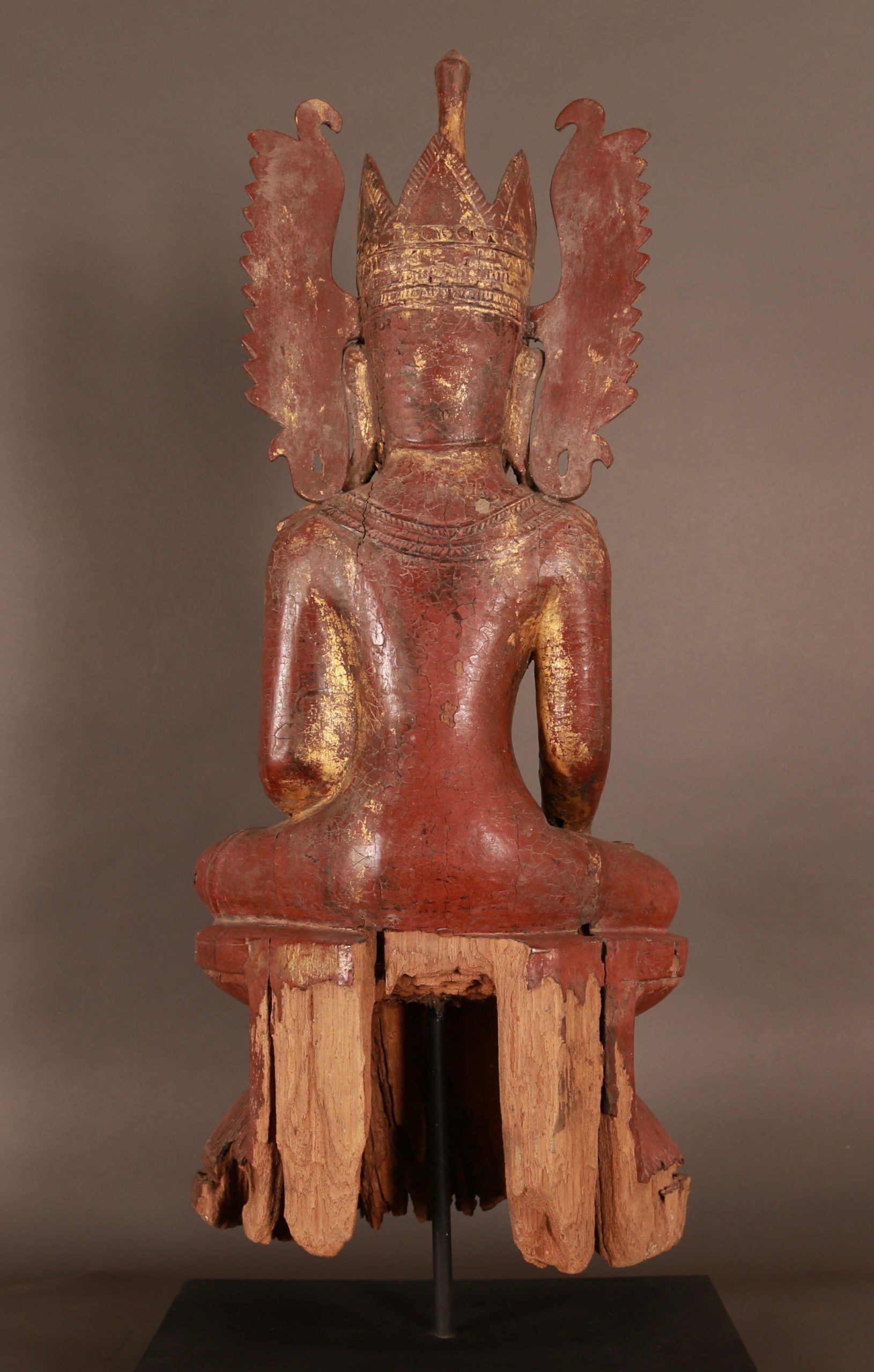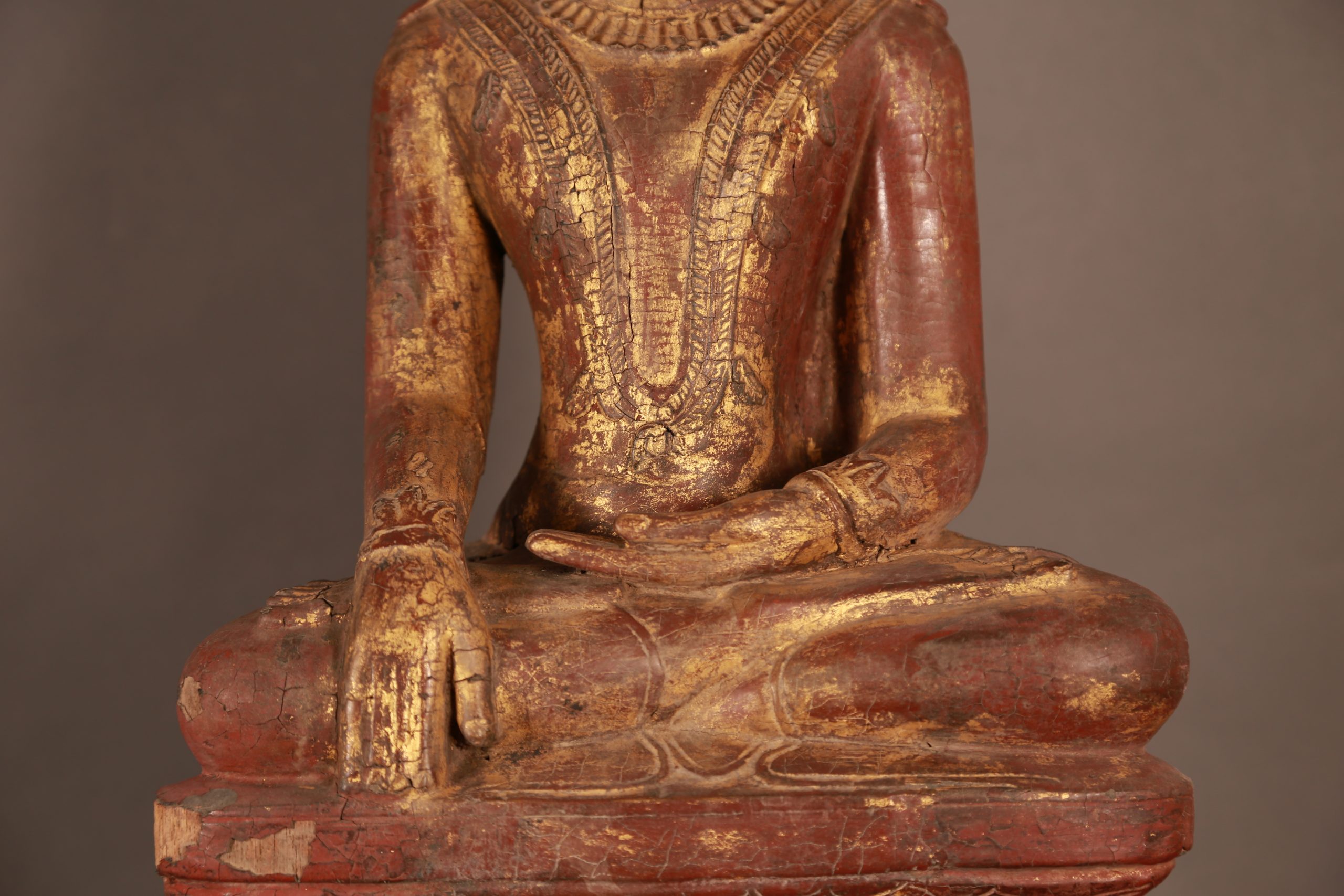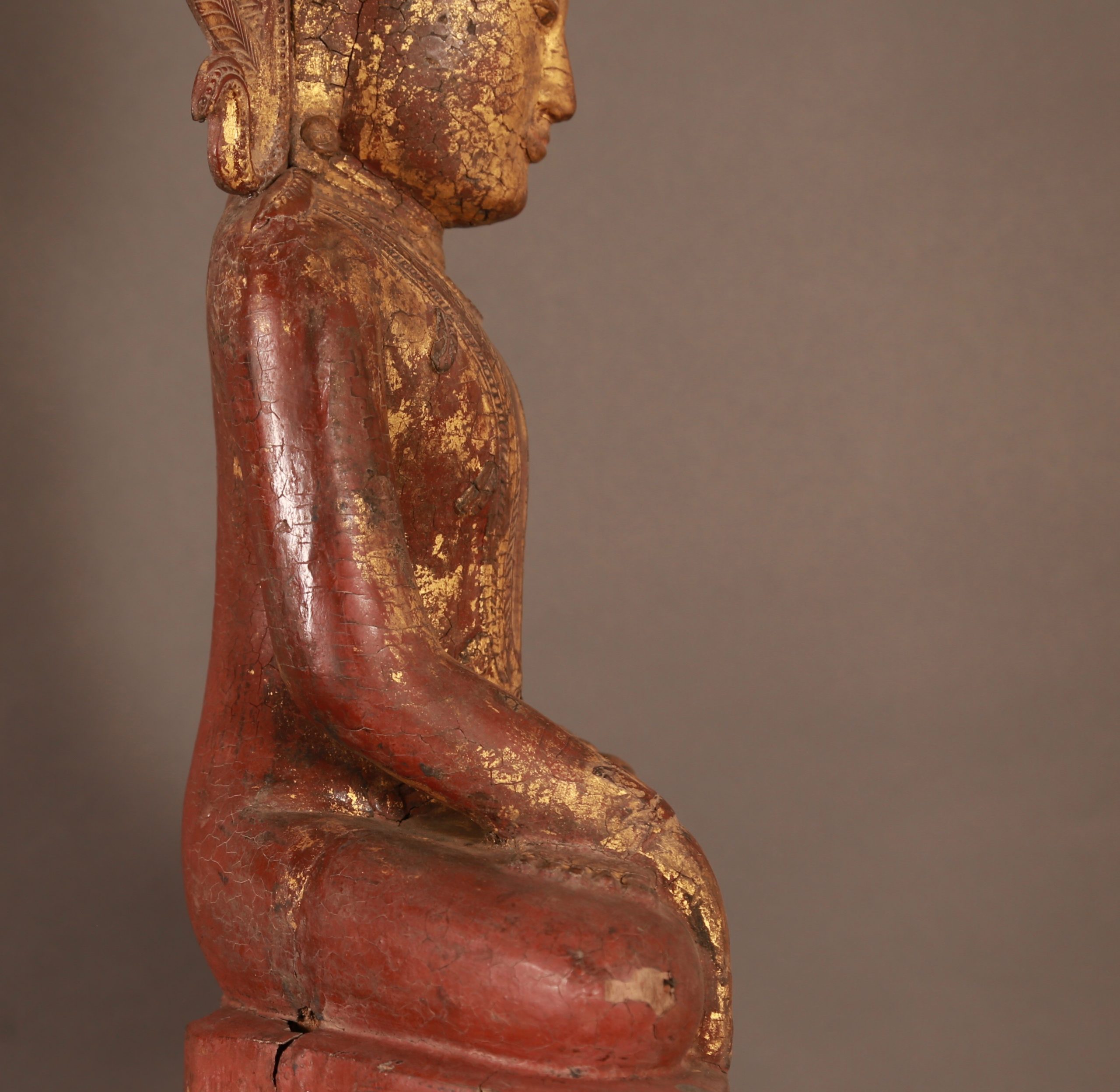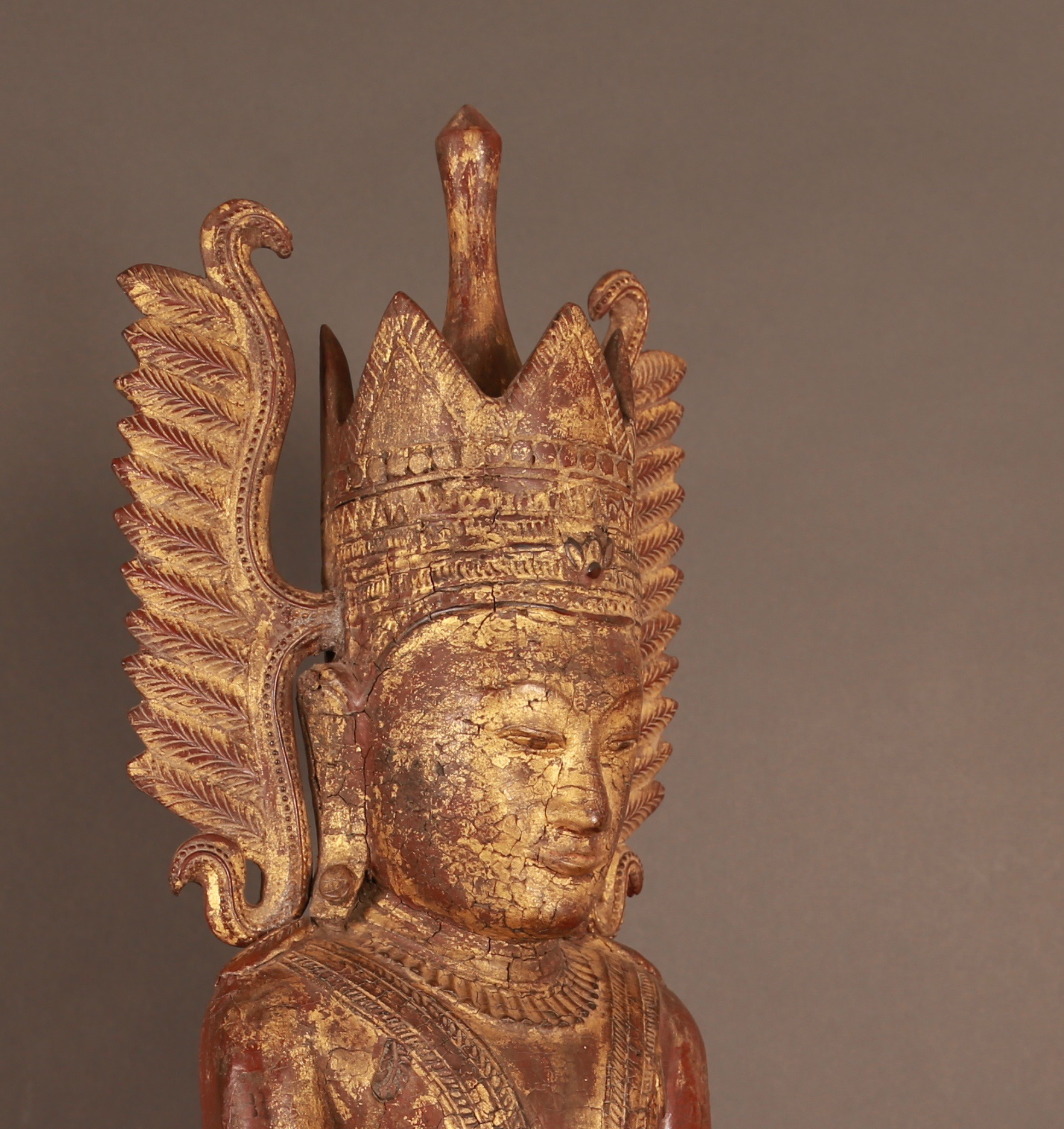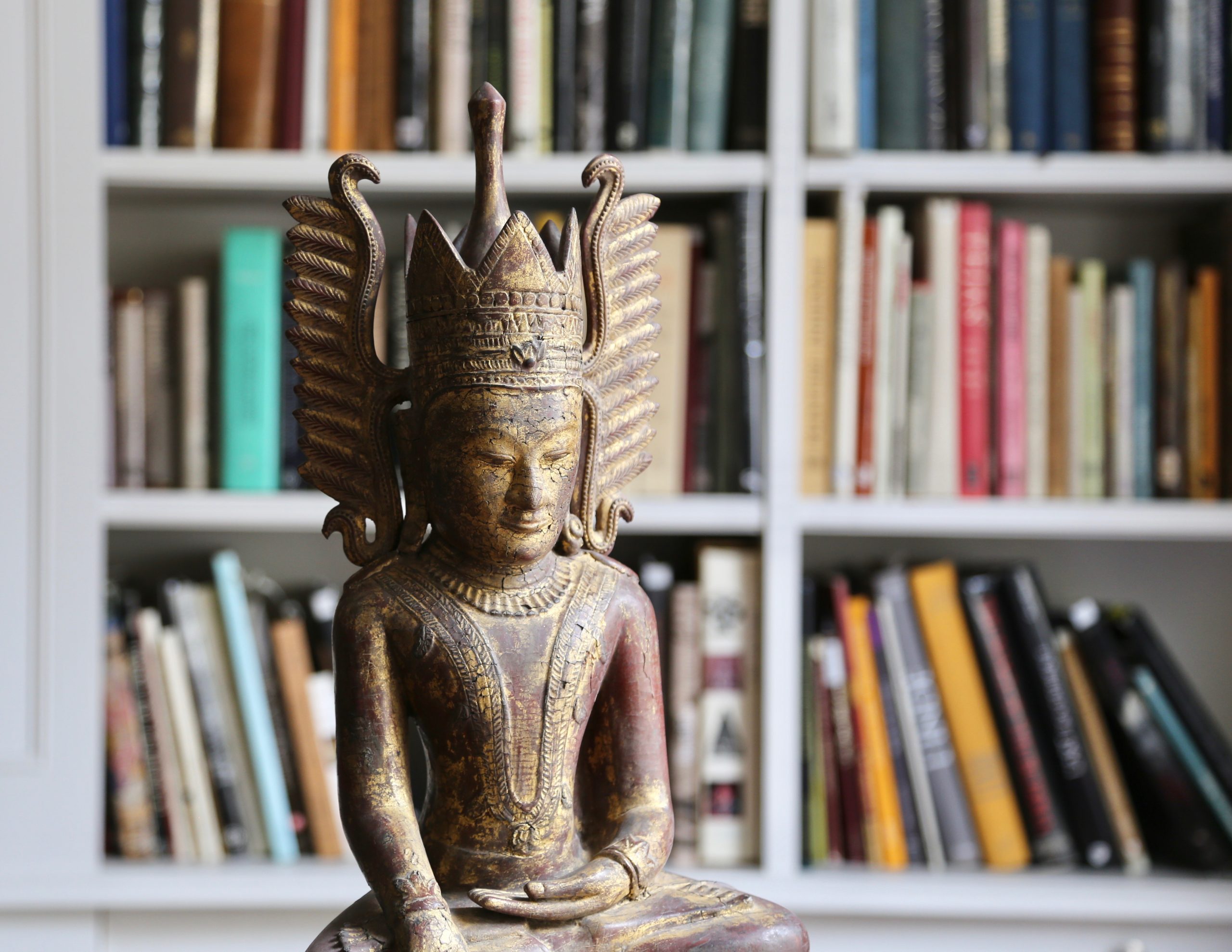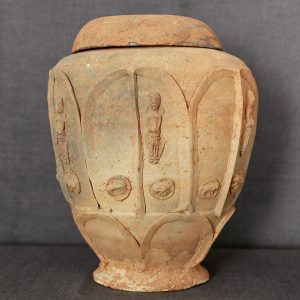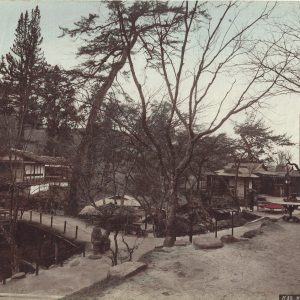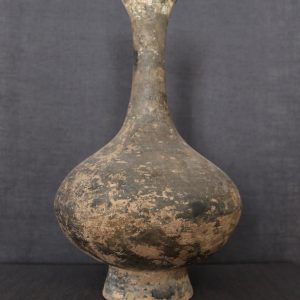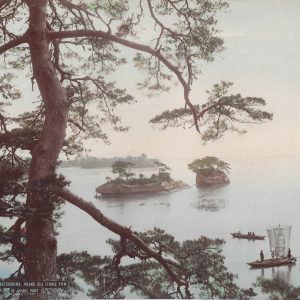Burmese Māravijaya Buddha (“Jambupati” type)
Burma
19th century
H. 63 cm or 25 in / L. 26 cm or 10 ¼ in
Depth 14 cm or 25 in
Description
This superb sculpture in the round depicts the Buddha crowned and seated on a high lotus throne. He is adorned with jewellery including necklaces and floral earrings. The Buddha wears an ushnisha, which is a cranial protuberance and manifestation of its wisdom. Its face is serene with an inward gaze, characteristic of its representations.
• The statue has a dual symbolic meaning:
- Firstly that of Buddha Māravijaya, an episode in the life of the Shākyamuni Buddha, the historical Buddha, who after defeating Māra -personification of death and demon of temptation- attains the enlightenment, the Awakening, the bohdi.
This, is visible through his attitude. On the one hand, his posture, asana, is the lotus one, known as padmāsana, which corresponds to his tightly crossed legs with both soles of his feet visible.
On the other hand, the movements of his hands, the mudrā, canonical and symbolic gestures. His right hand, with its back turned towards the faithful, is lowered to the ground. This gesture symbolises the moment when he touched the Earth, known as bhūmisparsha-mudrā. His left hand, on the other hand, rests on his crossed legs, palm open towards the sky in the gesture of meditation called dhyāna-mudrā.
- The Buddha statue here also refers to the moment of his meeting with King Jambupati.
His royal finery gives the keys to the reading. He is wearing a finely whittle crown. On either side of his royal headdress are growing ornamental bands in the form of leaves: typical of Burmese representations. He is also dressed in a robe with richly decorated borders. He wears a necklace close to his neck and another one that adorns his chest. Through his various adornments, the illustration of the Buddha is thus that of the historical Buddha dressed in his royal ornaments in order to confound the arrogance of King Jambupati. The Buddha’s approach would be such that, as an omniscient personality, he would know that King Jambupati would be destined to become an Arhat, a saint, and to bring him to that state he must make him aware of his humility.
This legend belongs to an extra-canonical religious literature, the Jambūpatisūtra. This writing is controversial and often considered as an imaginary work.
All made of lacquered and gilded wood, this statue has beautiful dark honey-brown tones. It dates from the Shan period towards the end of the 19th century. The Shan State is located in the north of Burma, in a region near the Inle Lake. It is inhabited by about 35 ethnic groups who migrated from Laos and Yunnan at different times and is the largest state in Burma.
Condition report:
The statue of this Buddha is in very good condition. The gilding is chipped off but the Buddha has kept all its splendour especially as the patina of the wood has remained giving it a shimmering and elegant colour.

